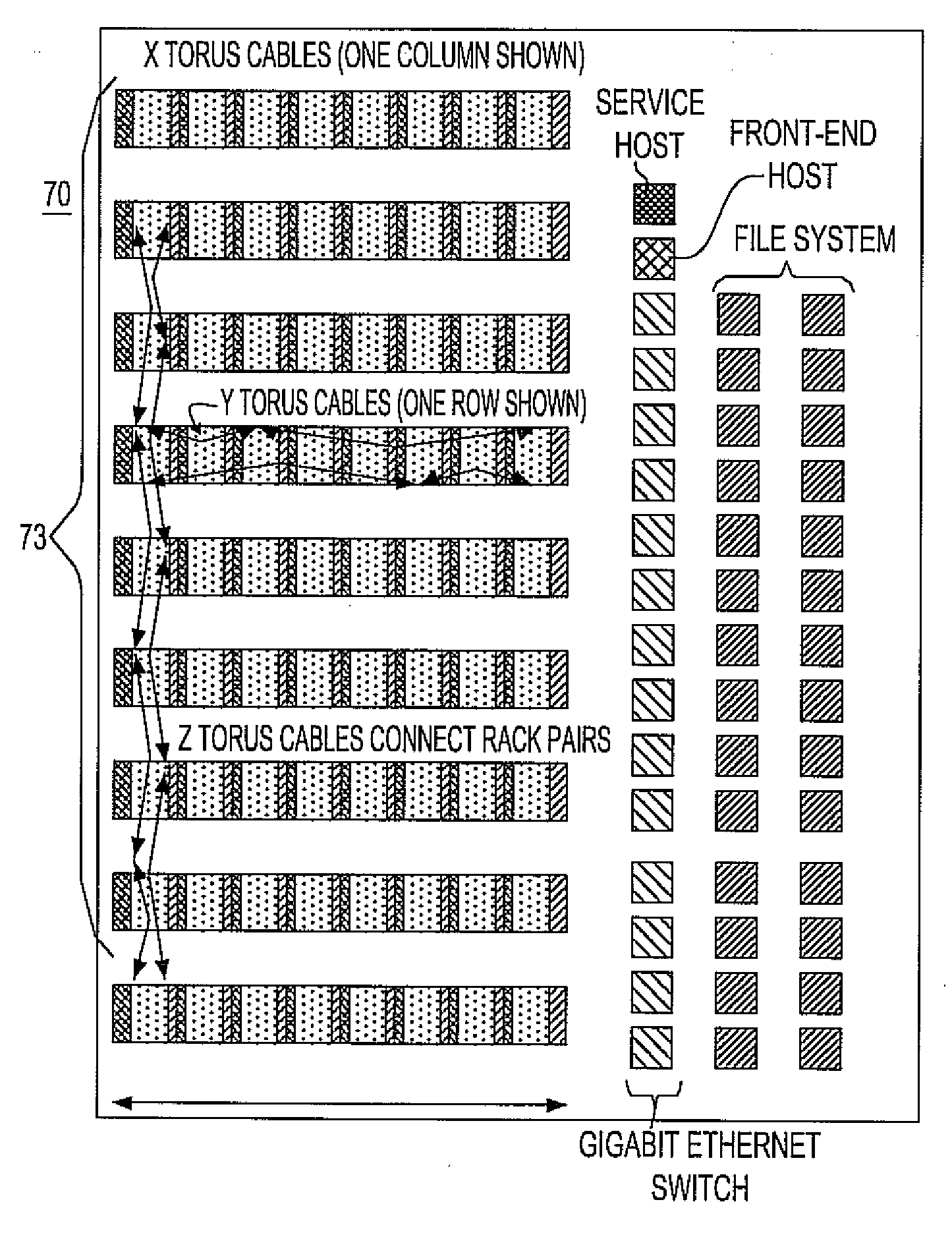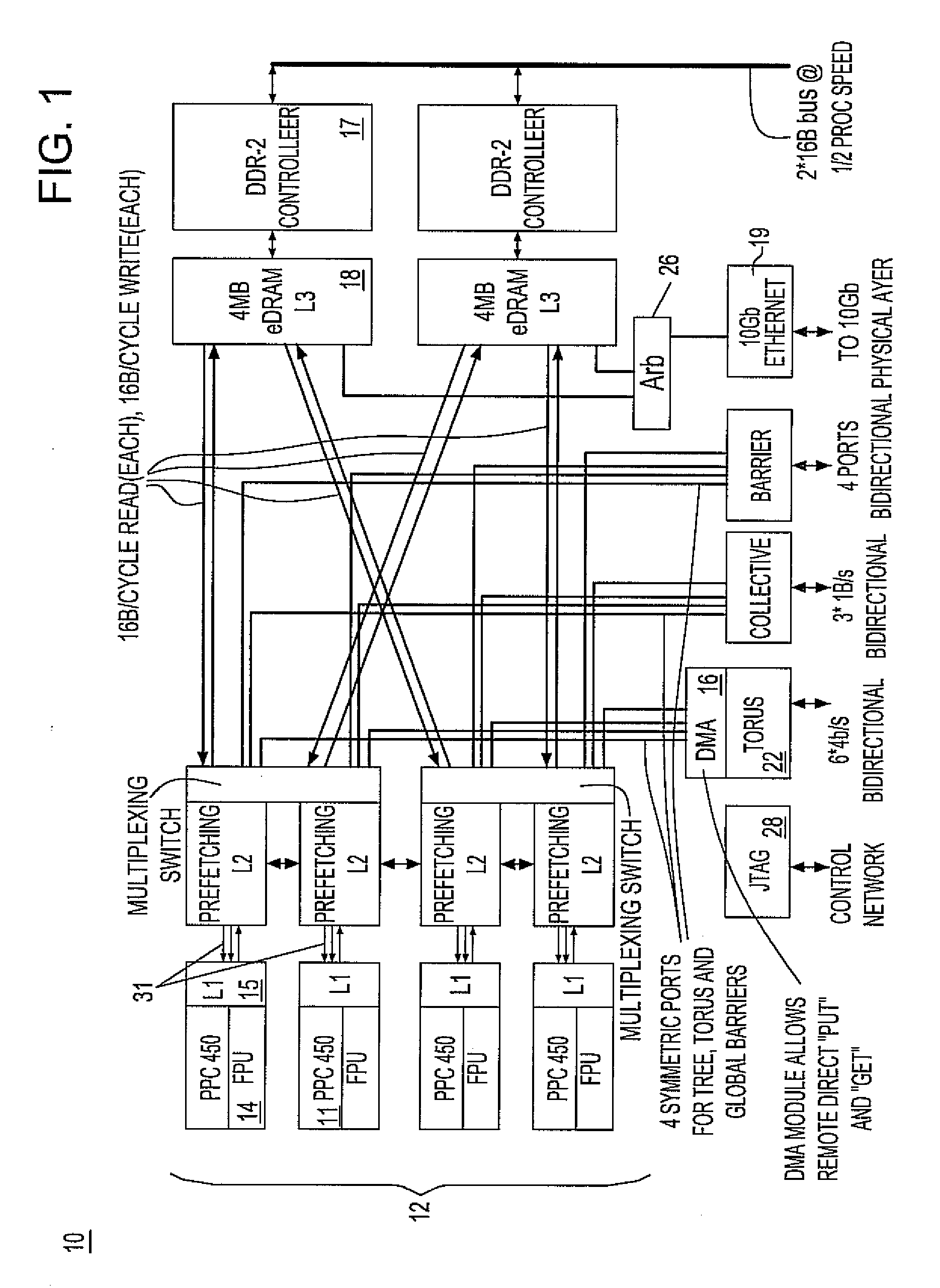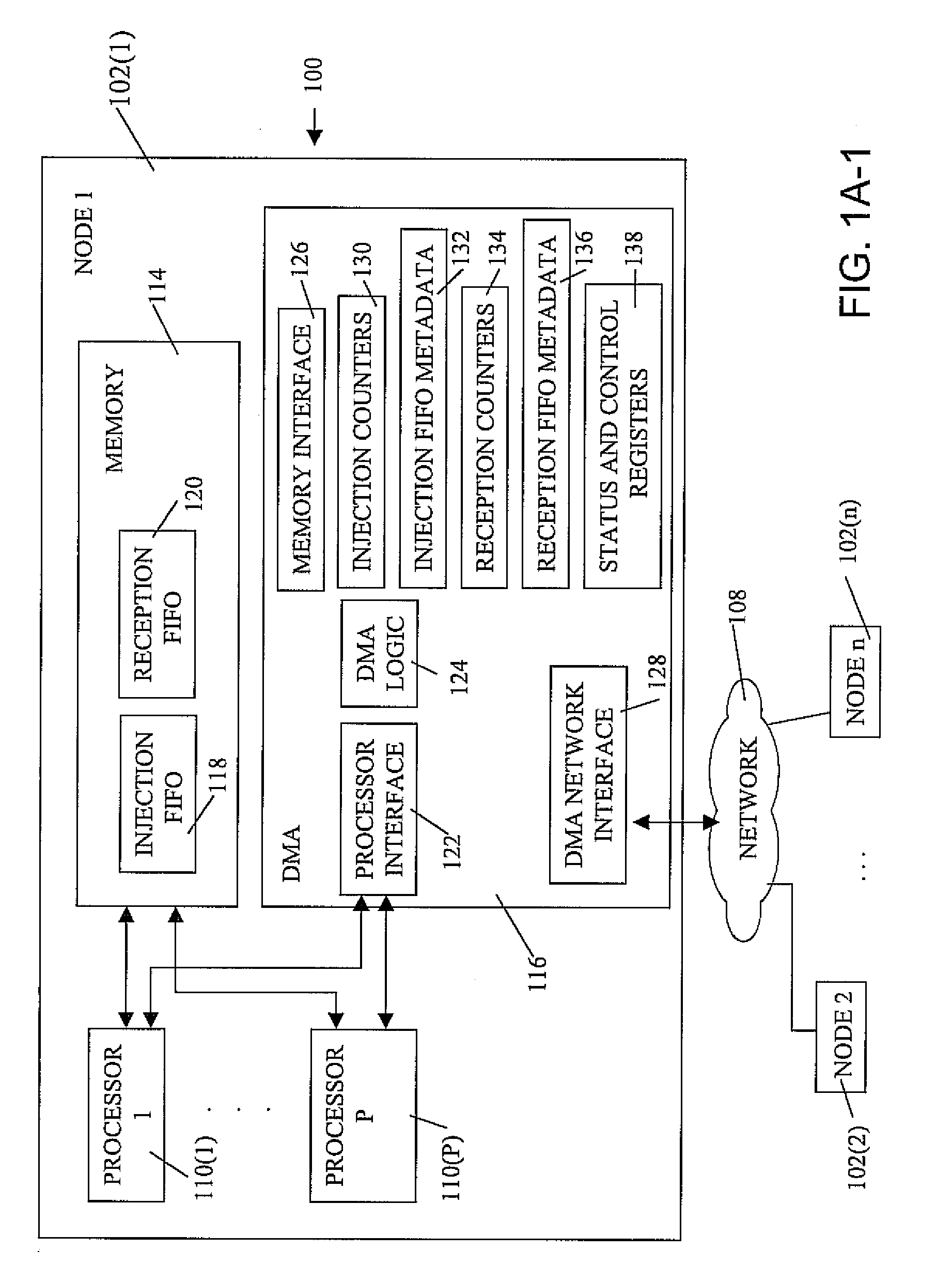Ultrascalable petaflop parallel supercomputer
- Summary
- Abstract
- Description
- Claims
- Application Information
AI Technical Summary
Benefits of technology
Problems solved by technology
Method used
Image
Examples
Embodiment Construction
[0066]The Massively Parallel Supercomputer architecture of the invention (alternately referred to herein as the “supercomputer”) is in the form of a three-dimensional torus interconnected and designed to deliver processing power on the order of a petaflops (a quadrillion floating-point operations per second) for a wide range of applications. In an exemplary embodiment described herein, the Massively Parallel Supercomputer architecture comprises 72K processing nodes organized as a 72×32×32 with each compute node being connected to six (6) neighboring nodes via 6 bi-directional torus links as depicted in the three-dimensional torus sub-cube portion shown in FIG. 5. It is understood however, that other architectures comprising more processing nodes in different torus configurations (i.e., different number of racks) is also used.
[0067]As will be described in greater detail herein, each node comprises a single ASIC and a plurality of SDRAM-DDR2 memory chips. The nodes are interconnected ...
PUM
 Login to View More
Login to View More Abstract
Description
Claims
Application Information
 Login to View More
Login to View More - R&D
- Intellectual Property
- Life Sciences
- Materials
- Tech Scout
- Unparalleled Data Quality
- Higher Quality Content
- 60% Fewer Hallucinations
Browse by: Latest US Patents, China's latest patents, Technical Efficacy Thesaurus, Application Domain, Technology Topic, Popular Technical Reports.
© 2025 PatSnap. All rights reserved.Legal|Privacy policy|Modern Slavery Act Transparency Statement|Sitemap|About US| Contact US: help@patsnap.com



